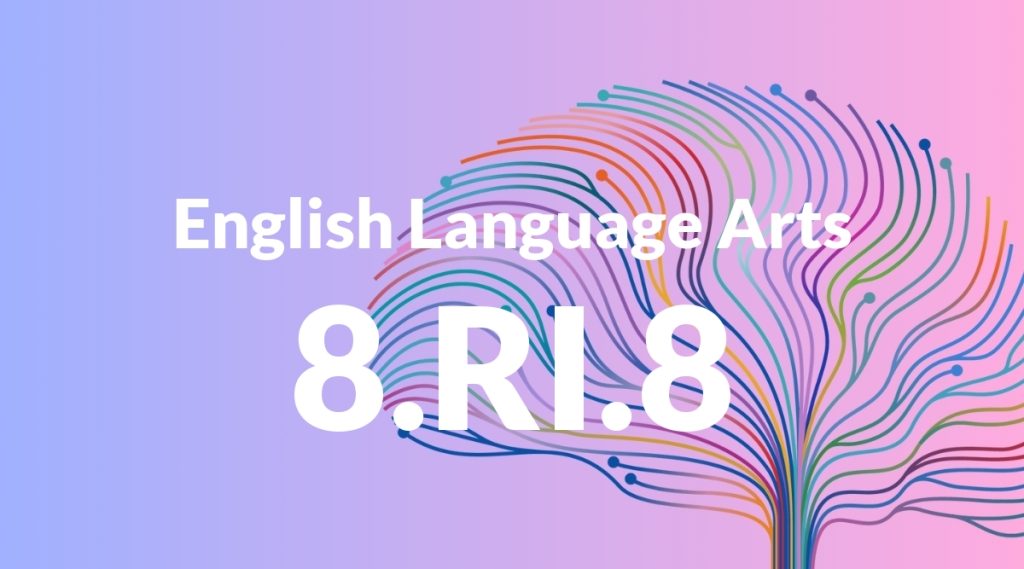Standard: 8.RI.8 – Delineate and evaluate the argument and specific claims in a text, assessing whether the reasoning is sound and the evidence is relevant and sufficient; recognize when irrelevant evidence is introduced.
Grade level: Grade 8
Subject: English Language Arts
Domain: Reading: Informational Text
Teacher Overview
This standard focuses on helping students develop critical thinking skills by evaluating the arguments and specific claims in informational texts. It is crucial for students to learn how to assess the soundness of reasoning and the relevance of evidence, as these skills are essential for academic success and informed citizenship. Students should understand how to identify main ideas and supporting details, and be familiar with different types of evidence and logical reasoning.
Students will develop the ability to critically analyze complex texts, evaluate multiple perspectives, and synthesize information from various sources, preparing them for more advanced studies in high school.
Common Misconception 1
A common misconception is that all evidence presented in a text is relevant and sufficient. This is incorrect because not all evidence directly supports the argument or is strong enough to be convincing.
Intervention 1
Use examples of texts with varying quality of evidence. Have students practice distinguishing between strong, relevant evidence and weak, irrelevant evidence.
Common Misconception 2
Another misconception is that if an argument is logical, all the evidence must be sound. This is not always true because even a logical argument can contain flawed or irrelevant evidence.
Intervention 2
Teach students to verify the credibility and relevance of evidence independently by cross-referencing with other reliable sources.
Prerequisite Knowledge
Students should have a basic understanding of how to identify the main idea and supporting details in a text. They should also be familiar with different types of evidence and the concept of logical reasoning.
Subsequent Knowledge
After mastering this standard, students will be able to apply critical thinking skills to more complex texts, including evaluating multiple perspectives and synthesizing information from various sources. They will also be better prepared for high school-level analysis and argumentation.
Instructional Activities
- Debate exercises on current events
- Group analysis of historical speeches
- Writing assignments focusing on evaluating evidence
- Peer review sessions to critique argumentation in essays
- Interactive lessons on identifying logical fallacies




